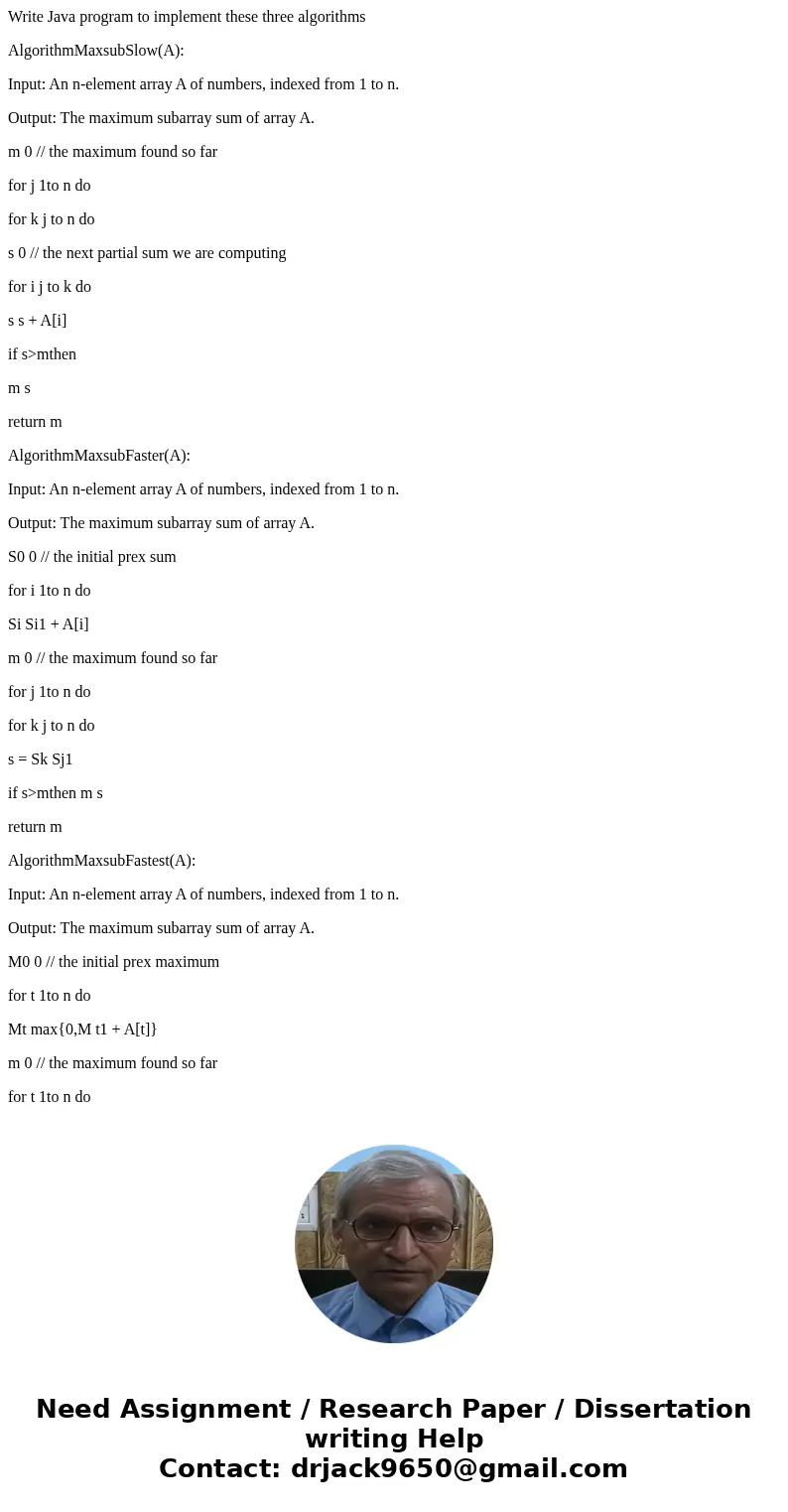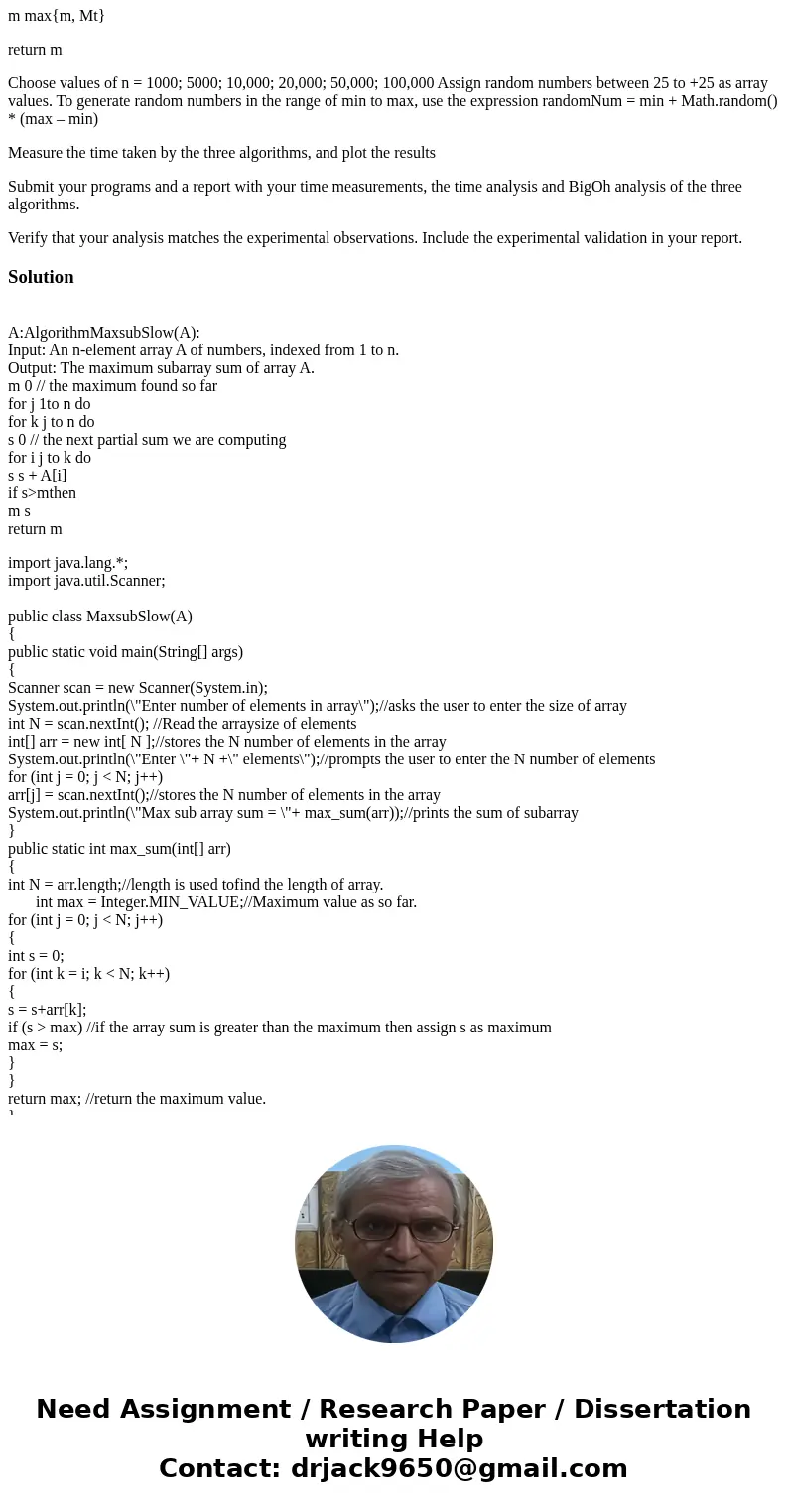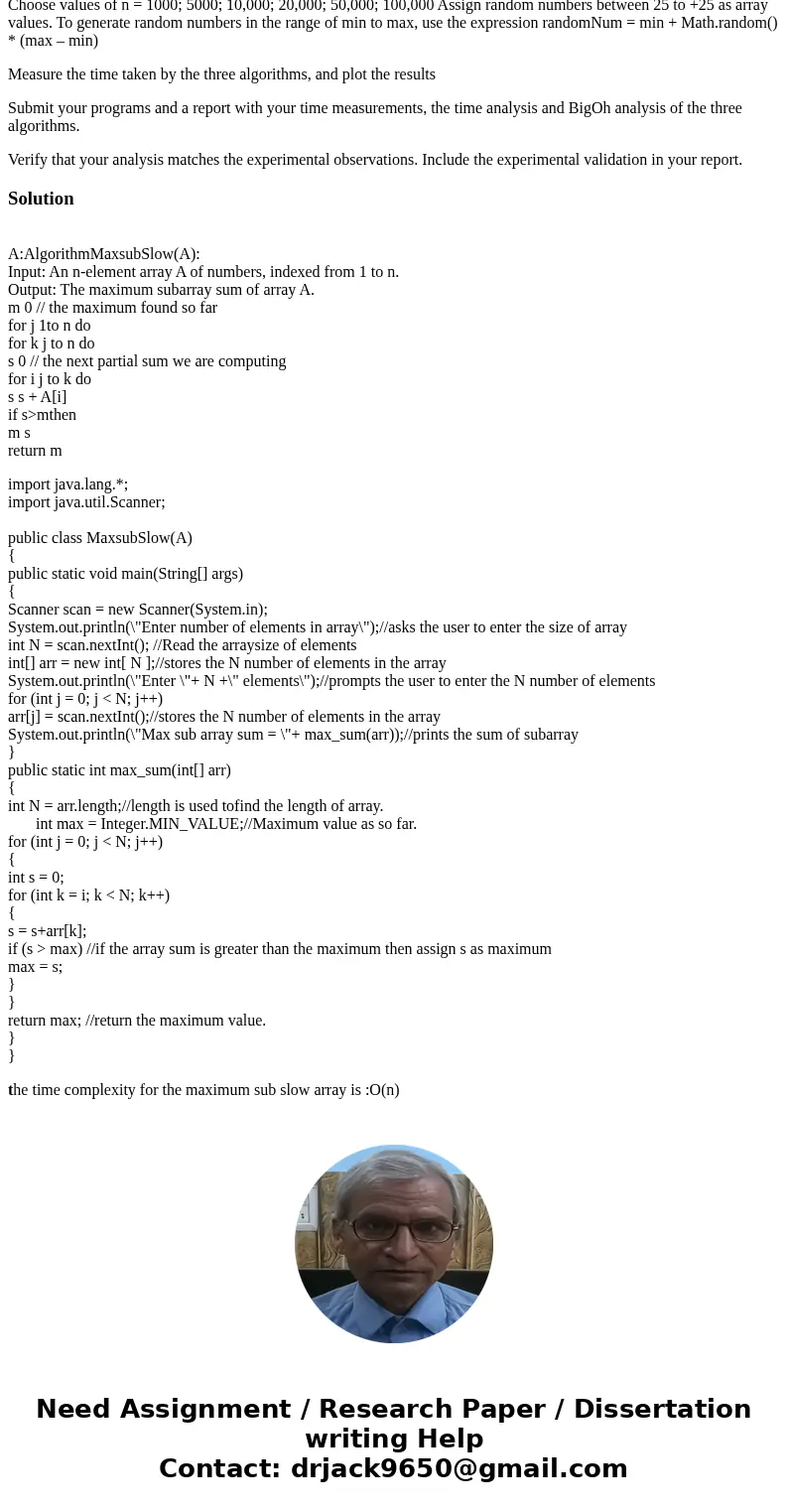Write Java program to implement these three algorithms Algor
Write Java program to implement these three algorithms
AlgorithmMaxsubSlow(A):
Input: An n-element array A of numbers, indexed from 1 to n.
Output: The maximum subarray sum of array A.
m 0 // the maximum found so far
for j 1to n do
for k j to n do
s 0 // the next partial sum we are computing
for i j to k do
s s + A[i]
if s>mthen
m s
return m
AlgorithmMaxsubFaster(A):
Input: An n-element array A of numbers, indexed from 1 to n.
Output: The maximum subarray sum of array A.
S0 0 // the initial prex sum
for i 1to n do
Si Si1 + A[i]
m 0 // the maximum found so far
for j 1to n do
for k j to n do
s = Sk Sj1
if s>mthen m s
return m
AlgorithmMaxsubFastest(A):
Input: An n-element array A of numbers, indexed from 1 to n.
Output: The maximum subarray sum of array A.
M0 0 // the initial prex maximum
for t 1to n do
Mt max{0,M t1 + A[t]}
m 0 // the maximum found so far
for t 1to n do
m max{m, Mt}
return m
Choose values of n = 1000; 5000; 10,000; 20,000; 50,000; 100,000 Assign random numbers between 25 to +25 as array values. To generate random numbers in the range of min to max, use the expression randomNum = min + Math.random() * (max – min)
Measure the time taken by the three algorithms, and plot the results
Submit your programs and a report with your time measurements, the time analysis and BigOh analysis of the three algorithms.
Verify that your analysis matches the experimental observations. Include the experimental validation in your report.
Solution
A:AlgorithmMaxsubSlow(A):
Input: An n-element array A of numbers, indexed from 1 to n.
Output: The maximum subarray sum of array A.
m 0 // the maximum found so far
for j 1to n do
for k j to n do
s 0 // the next partial sum we are computing
for i j to k do
s s + A[i]
if s>mthen
m s
return m
import java.lang.*;
import java.util.Scanner;
public class MaxsubSlow(A)
{
public static void main(String[] args)
{
Scanner scan = new Scanner(System.in);
System.out.println(\"Enter number of elements in array\");//asks the user to enter the size of array
int N = scan.nextInt(); //Read the arraysize of elements
int[] arr = new int[ N ];//stores the N number of elements in the array
System.out.println(\"Enter \"+ N +\" elements\");//prompts the user to enter the N number of elements
for (int j = 0; j < N; j++)
arr[j] = scan.nextInt();//stores the N number of elements in the array
System.out.println(\"Max sub array sum = \"+ max_sum(arr));//prints the sum of subarray
}
public static int max_sum(int[] arr)
{
int N = arr.length;//length is used tofind the length of array.
int max = Integer.MIN_VALUE;//Maximum value as so far.
for (int j = 0; j < N; j++)
{
int s = 0;
for (int k = i; k < N; k++)
{
s = s+arr[k];
if (s > max) //if the array sum is greater than the maximum then assign s as maximum
max = s;
}
}
return max; //return the maximum value.
}
}
the time complexity for the maximum sub slow array is :O(n)



 Homework Sourse
Homework Sourse